Cooler Master AquaGate Viva
January 31, 2007 | 14:17
Companies: #amd #ati #cooler-master #intel #nvidia

Watercooling is the future?
Aftermarket watercooling has been of enthusiast centric usage for many years, even recently it has been included in retail products like the watercooled BFGTech GeForce 8800 GTX, we recently reviewed. This hasn’t stopped some companies making all in one solutions that supposedly offer more efficient (i.e. quieter and cooler) cooling than the traditional heatsink and fan option. The problem with these is that they often don’t live up to their claims in cooling, offer limited installation options and cost more than alternative air-cooling solutions.Cooler Master has opted for something a little different with its AquaGate Viva; whilst this is still an integrated watercooling system it can be installed on a CPU or graphics card, and the accompanying radiator for dispelling the heat can be placed in either a PCI slot, a 3.5” hard drive bay or a 5.25” optical drive bay.
Cooler Master's Aqua Gate Viva
The AquaGate Viva consists of a cooling block with integrated pump, black rubber tubing with integrated flow sensor and alarm, and finally a radiator with two 80mm low profile fans attached. It’s a bit messy, with the four power cables and two tubes having to be routed around. The power cables make use of standard 3-pin attachments so you can either use these with a fanbus (not advisable for the pump and flow sensor), or use the motherboard pins available.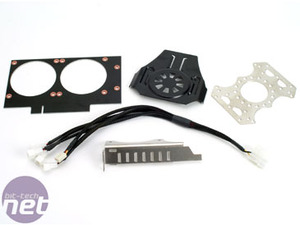
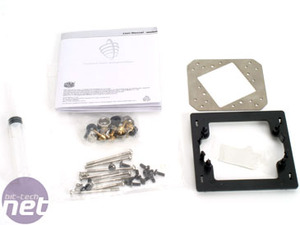
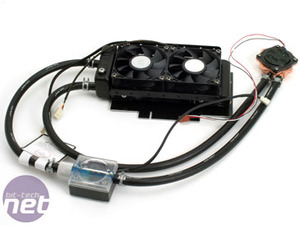
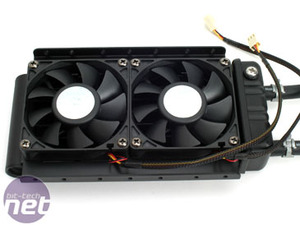
Cooler Master does provide a power adapter for these, where you can plug all four in and run them through a single 3-pin connector or 4-pin molex. The powered parts are of sufficiently low power enough to not burn out your motherboard by focusing them through a single 3-pin connector should be OK.
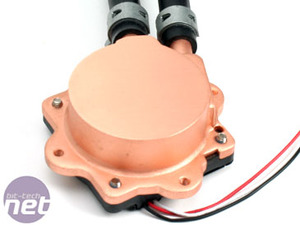
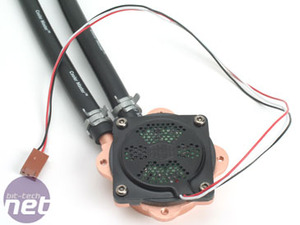
The block is not polished, but it is smooth and flat
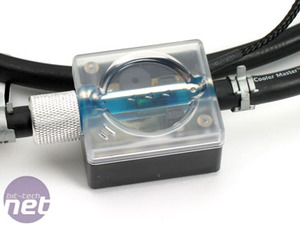
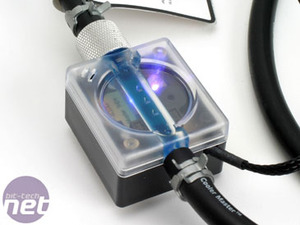
The flow meter includes an LED to show you it has power
- Not plugging in one or both the fans will cause an overheat alarm eventually from the motherboard/CPU or graphics card, alerting you to the fact there’s a problem.
- Not plugging in the pump will cause the flow alarm to alert you to the fact the liquid isn’t flowing.
- Not plugging in the flow alarm isn’t an issue to the cooling of the system, but you will be alerted by the lack of blue LED illumination. If that’s actually a method of notification. Should the pump fail later there will be a problem and you will be alerted from an overheat alarm.
- Not plugging in both the pump and flow alarm will also overheat the system slowly, although generally if it’s installed on a graphics card, it will need to make it into windows first to allow the graphics software to load. The chance of permanent damage from overheating is slightly greater, but it does have a decent sized copper heatsink which will hold a lot of heat, and GPU cores can nearly always withstand a higher heat threshold than a CPU.
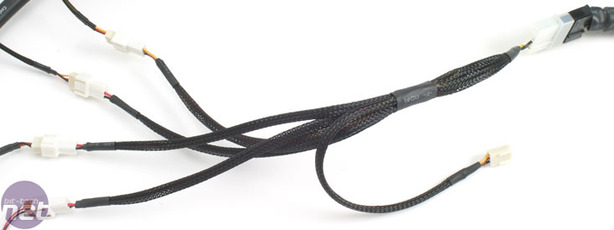

MSI MPG Velox 100R Chassis Review
October 14 2021 | 15:04








Want to comment? Please log in.